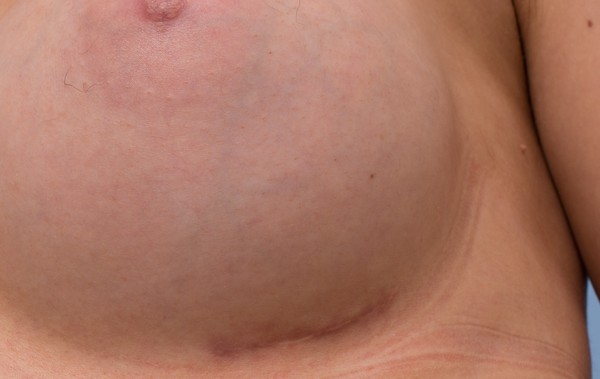The breast augmentation incision is the first part of your breast surgery. The placement of that scar has many implications in terms of visibility and safety. This is why you should understand the factors that go into the decision to help you engage with your surgeon.
Types of incisions
There are many different types of breast augmentation incisions. They range from the traditional breast fold incision to the more controversial belly button incision. The three commonest incisions I see in my practise are the infra mammary fold incision (IMF), the axillary fold incision and the periareolar incision. I will explain where each is and then expand on my favourite.
Periareolar Scar
This breast augmentation incision is placed around the lower half of the areolar of the breast. Areolar is the pink/brown coloured skin surrounding the nipple. The perceived advantages of this scar is that it is difficult to see and maintains the lower fold of the breast intact.
The disadvantages of the periareolar incision is the surgeon is cutting through some of the breast ducts. Firstly this can this interfere with future breast feeding. Secondly it exposes the breast implant to naturally occurring bacteria which live in the ducts. Dr Sam Cunneen works tirelessly to avoid any exposure to bacteria so his preference is to avoid this incision.
Finally the periareolar scar is also quite obvious when going topless. This is a tell tale sign of a breast augmentation.
Axillary Incision
This breast augmentation incision is made in the line of the armpit. The advantage of this incision is that it forms a well hidden scar.
The disadvantages are that the incision is a long way from the final position of the breast implant. Hence it is very difficult for the surgeon to see exactly where they are placing the implant. Consequently it is impossible to accurately control how the breast tissue slides over the muscle to interact with the implant.
The final point to make regarding the scar is that while the scar is quite hidden, even when topless, it is visible when a patient raises her arms.
Infra mammary fold (IMF)
IMF incision 3 months post
Probably the most commonly used incision to place a breast implant is the IMF. The aim of the incision is to put the final scar right in the lower breast crease where the breast comes out from the chest. There are three reasons this is the preferred incision of Dr Sam Cunneen at Breast Augmentation Perth.
Hidden scar
A well placed IMF incision is very hard to see with your bra removed. This is because the breast implant folds the scar into the chest, obscuring the incision from view. To see your scar someone can either crouch down to look up or you can lift up your breast to show it off!
Surgical vision
To give you the best looking breasts he possibly can, accurate implant placement is critical. No other incision provides as good access as the IMF incision to allow this to occur. Using an IMF incision Dr Sam Cunneen can release as much breast gland as required off the underlying muscle to craft these lovely breast shapes.
Safety
Besides trying to create the most spectacular breasts possible we are constantly striving to avoid any complications from the surgery. One of the most concerning complications, although rare, is infection. As the breast ducts harbour naturally occurring bacteria, Dr Sam Cunneen is able to avoid all of these with an IMF incision. Bacteria are disastrous if they stick onto a breast implant. The IMF incision, by going below the breast gland, maintains all the breast ducts intact reducing the risks of infection.
More News Posts From Breast Augmentation Perth
As you can see there is a lot to think about. Remember that any procedure carries risks and complications. Ensure your surgeon is open and honest about these and if you aren’t entirely happy get a second opinion from a Plastic and Reconstructive Surgeon. Check their qualifications at the ASPS and ASAPS website.
Please email if you have any other questions. The next blog post will have a discussion about the different positions an implant can be placed. Until then keep the Questions coming! Sam
